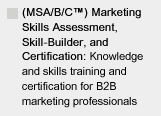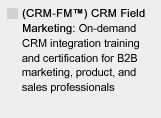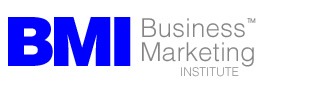MAKE SURE YOU CONTINUE TO RECEIVE EACH ISSUE OF TUESDAY MARKETING NOTES—CLICK HERE TO RENEW YOUR FREE SUBSCRIPTION (IF YOU'VE ALREADY SUBSCRIBED, NO NEED TO RE-SUBSCRIBE)

The Payoff for B2B Content Marketing is Movement
Ardath Albee, Marketing Interactions
For some reason, B2B marketers tend to jump the gun when reacting to prospect behavior. Just because someone accesses your content doesn't mean they're sales ready. In fact, if you treat prospects that way—without a darned good reason—you've missed the point.
Here's an example to consider:
• A company with a complex sale sees an average buying cycle time of 6 to 8 months;
• Their nurturing strategy includes 7 touches orchestrated over the period of 30 days;
• These touches include a combination of phone calls and emails
All of you have probably experienced these kinds of campaigns. I know I have. But, here's the rub; pestering a prospect to move faster makes them dig in their heels and stay stuck, or even reverse their intention to change (think delete, unsubscribe, and voicemail jail).
Why? You've just scared the bejeezus out of them. It's the equivalent of walking into a car dealership and getting the hard sell. Nobody likes to be pushed. Especially when we're "just looking."
The goal of marketing content should be to produce incremental movement.
Movement doesn't mean leaping from "I downloaded your white paper" to "I'm ready to buy." Believe me, if they were, they'd contact you on their own.
Consider the idea of movement in small steps across their buying process:
From: Who are these guys? I'll take a chance and click this link to see.
To: Hmm. That was an interesting article.
From: Oh, another article on this topic.
To: They have good information. I'll forward it to Joe and see what he thinks.
From: Oh, good. A webinar showcasing a customer like me.
To: I'll go register and see how these guys solved the problem.
From: Ah, they simplified the complexity. This might work for us.
To: Now, I have a question.
From: Good answer. Thanks for the follow-up links, too!
To: I can tell my boss about this.
It reads faster, but all of that happened over the course of about two and a half months. It was comfortable for the prospect and gave them time to choose to participate at their own pace. Granted, it's a simplified view, but what's important is that each content resource worked to produce movement.
Not huge leaps in movement, but incremental steps that build a relationship over time. The benefits of building relationships over the long haul are numerous. When each marketing touch point demonstrates consistency, care and a valuable exchange, your prospect's confidence in you—and themselves—increases. They begin to trust the interactions they have with your content and communications.
They don't feel threatened that you're going to pounce on them with a sales pitch as soon as they raise their hand for dialogue.
They can begin to visualize getting the results you're talking about by solving their problem in the way you recommend. You're becoming a valuable resource they can rely upon.
This is why it's important to map content to buying stages. You've got to plan touch points across the entire buying cycle. If you cram everything into a fraction of that time, you stand to lose all the prospects who have a longer horizon. Not to mention driving potential customers away when you're too aggressive and annoying.
Your buyers are busy. All their day-to-day responsibilities don't just vaporize when they have a new problem or priority to solve. There's a lot of complexity to work out. There are a lot more people involved in the process. Every dime they spend has to produce results, and there's that risk element that slows down everything else.
Marketing effectiveness will improve when your content and communications are focused on helping buyers solve problems at their own pace. Nudges are acceptable. Trying to push people to buy because you have sales goals to meet is not.
So plan the goals for your marketing content around producing incremental forward movement. Then monitor for patterns of acceleration and create more content paths like that to pull buyers forward—because they choose to take that next step with your company. Not because you decided they should.
Ardath Albee (Ardath@marketinginteractions.com) is an expert at creating contagious content and e-marketing strategies that engage prospects-from initial attention until they're sales ready. She has a unique ability to develop content strategies that work hand-in-glove with overall corporate and product positioning to deliver hard hitting e-marketing programs and tools that compel customers to buy. Ardath helps her clients generate more opportunities by optimizing how they leverage marketing automation and CRM technology investments. Her clients include Covad Communications, LANDesk and Silicon Graphics. Visit her website and industry-leading blog to learn more: www.marketinginteractions.com.








